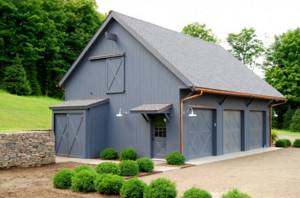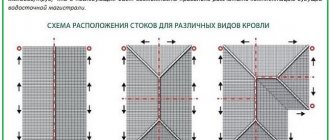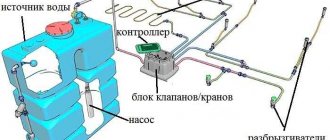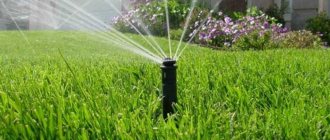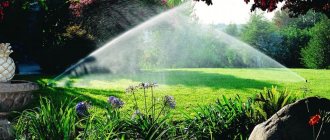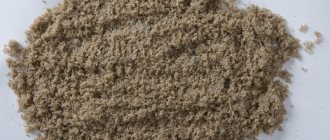The abundance of precipitation falling almost throughout the entire territory of Russia, frequent thaws in winter and other weather “surprises” force homeowners to think about ways to drain rain and melt water from their cottages. Without resolving this issue, it is unlikely that it will be possible to achieve durable and problem-free functioning of the roof, and indeed the entire building as a whole. This is due to the fact that the absence of an organized drainage system can contribute to excessive moisture in the foundation and finishing of the building facade, deterioration of the thermal insulation properties of materials and the performance characteristics of the roof, waterlogging of the foundation and the creation of a lot of inconvenience in the local area. Gutters will help to avoid such troubles, thanks to which water from the roof is collected and directed through gutters and pipes into the drainage system of the house, protecting it from premature destruction. In addition, it must be said that drainage systems matched to the tone of the facade and roof also perform decorative functions, because being an expressive architectural accent, they emphasize the beauty of the roof and decoration of the facade of the building and give it a unique and elegant appearance.
The concept of drainage systems, history of occurrence
Today, drainage systems , which are also called gutters , drains or spillways , usually mean systems of structures designed for the organized drainage of precipitation and melt water from the surface of the roofs of buildings into the general storm sewer system of the land plot. Speaking about the history of drainage systems, it should be noted that drainage technology was discovered only a few centuries ago, although people have been using the method of draining rain and melt water from their homes for more than a thousand years. Who and when invented gutters, history is silent, although references to them can be traced back to ancient Greece, where gutters were cornices, which were often decorated with various ornaments in the form of the faces of mythological animals. This tradition reached the stone buildings of the Middle Ages, Gothic and Renaissance times.

In different historical eras, gutters were built from a wide variety of materials: wood, and in ancient temples even from baked clay and marble. The most ancient and simplest way to organize drainage was to shape the edges of the roof into a gutter, which collected rainwater. The role of the pipe was played by the ebb, from which the water fell at a safe distance from the entrance to the house. Already in the 17th century, craftsmen learned to sheathe gutters with copper, sheet material or lead, where thick black tar acted as a sealant. A little later, vertical pipes made of sheet copper and steel began to appear. For roofs with a long overhang, special gutters were installed, which were made from the same material as the drainpipes. At that time, special oil paints were used as an anti-corrosion coating for the gutter. It should be noted that gutters and pipes were made by hand in those days, and each builder had his own standards and special shapes: for example, elbows curved in the shape of a swan's neck. In the 18th century, tin-plated sheet metal was replaced by zinc, which was more weather-resistant. Thus, the tradition was continued by using zinc and an even more expensive material - copper. In the 19th-20th centuries. Transformations in production technology and methods of organizing drainage systems continued: in 1960, plastic was first used in the production of gutters.
Correct installation of the drainage system
Installation of a drain in a wooden house occurs using fastening elements made of metal or plastic.
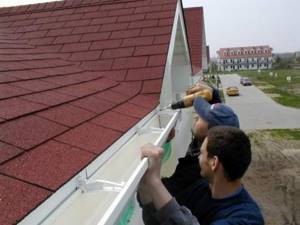
There are several rules that should be followed when installing the system and attaching the drain with brackets.
- After installation is completed, the distance between the edge of the roof and the rear edge of the gutter must be at least 2.5 centimeters.
- The front (outer) edge of the gutter should always be lower than the back - 2 millimeters is enough.
- Elbow connections must have a straight pipe section of at least 60 cm between them.
- All elbows are collected towards the drain - this is necessary so that the flow of water (sometimes with debris, ice fragments and snow clots) does not encounter difficulties along its path.
- The upper fastening element of the drain pipe holds it rigidly, while the lower one does not limit the movement of the element.
If the site has storm drainage , then the drain pipes direct the flow of water directly into it. To do this, use nozzles at the end of the pipe, which are inserted into point storm inlets. They, in turn, transport water into the storm drain without affecting sand traps and blind areas.
Main purpose and functions of drainage systems
The importance of drainage systems in organizing the roof of any home is difficult to overestimate. Among the main functions that gutters perform, it should be highlighted that:
- Drains allow you to avoid destructive ingress of water onto the facades, plinth, foundation of the building, as well as into the internal space of the facade structure, including heat-insulating materials;
- It is an organized water drainage system that makes it possible to prevent roof leaks, which can occur when valleys are installed incorrectly or when small slopes are installed, which contributes to the accumulation of water on the roof.
- The use of gutters prevents the possibility of flooding in the basements and attics of the building and the appearance of dampness in the house. As a result, it is an organized drainage system that will help maintain a good microclimate in the building;
- The use of drainage systems prevents the destruction of blind areas, as well as the subsequent accumulation of water under the foundation and in the basement of the building;
- It is gutters that allow you to create comfortable conditions even after a very heavy rainfall, preventing the appearance of puddles and dirt in the area adjacent to the house;
- Drainage systems perform a decorative function, giving the building completeness and unique style.
Gutter as a system
It is no coincidence that the drainage system bears the second name “gutter system”: consisting not only of pipes and gutters, but also of a wide variety of additional elements and ultimately turning into a drainage system, it is a clearly established system for draining rain and melt water from the building. So, the main elements of the drainage system are: horizontal wall or hanging gutters , into which water from the roof is collected, as well as vertical drainpipes , through which water from the gutters flows to the ground. As a rule, drainage pipes are adjacent to roof gutters, flat roofs, balconies and loggias, and they can be located both inside and outside buildings. The most important role is also played by such elements of the drainage system as drains , through which water flows are directed from the horizontal elements of the system to the vertical ones. In addition to the main ones, there are also additional elements of drainage systems, among which are: pipe connectors, connectors and hooks for fastening gutters, brackets, tees, clamps, elbows, S-circuits, drainage funnels, universal plugs, etc. As a rule, in various design solutions these additional elements may be absent or take a completely unexpected form. However, some parts of the drainage system cannot be neglected or skimped on their installation: for example, brackets , since it is the presence of additional reinforcing brackets that prevents damage to the drainage system in the event of exposure to snow and wind loads.
It should be emphasized that a drain is not only a system of basic and additional elements. The installation of drains itself is a systematic approach that involves taking into account a number of factors, such as: the area and configuration of the roof, the amount of rain and melt water discharged, the architectural features of the building, the color of the roofing and facade finishing, the design of the drainage and anti-icing system.
So, very important in the design of drains is the organized drainage of rainwater into the drainage system , which prevents water from penetrating through the adjacent groundwater into the basement of the house. Depending on the method and characteristic features of the catchment area, two main types of drainage are distinguished: closed drainage and open drainage. A closed drainage system is a system of pipes laid in the soil along the perimeter of a building or area being developed to a certain depth. In areas with low groundwater levels, an open drainage system or surface drainage system (the so-called storm drainage system) is used, which is a prefabricated structure consisting of drainage gutters made of plastic, concrete or polymer concrete, sand traps, sand collectors, decorative gratings, road hatches, as well as additional elements that allow you to easily install the system without violating the design intent.
There are 2 ways to organize surface drainage:
- Linear, which consists of arranging flat surface slopes to the drainage line, which is made up of modular channels. Linear drainage is a system of drainage gutters made of plastic, concrete or polymer concrete, sand traps, sand collectors, road hatches and decorative gratings that prevent debris from entering the system. Through the drainage system, the linear drainage system can be connected to the storm sewer;
- Point, which is the most common method of drainage, when an envelope-type slope is arranged on the surface of the catchment area, and a catchment element is installed at the point of intersection of the slopes. To organize point drainage, devices such as storm water inlets, drainage systems, ladders and storm flaps are used. Point drainage is installed where local water collection is necessary: under roofs, in door pits, under watering taps and in other places.


Thus, when organizing gutters, it is important to pay attention to all the details and elements of the system, otherwise you risk not only spoiling the appearance of your home, but also getting all the troubles associated with the lack of a well-thought-out drainage system.
Popular models of modern drainage systems
Just a few years ago, and especially throughout the last century, galvanized gutters enjoyed unprecedented popularity in Russia: as a relic of the past, they can still be found today in rural areas or in gardening associations where there are still houses covered with slate or roofing felt.
However, in recent years, there has been a growing understanding among homeowners that galvanized drainage systems made using outdated technology using a makeshift or semi-factory method are no longer capable of performing their main functions of water drainage. There are many reasons for this: the susceptibility of steel to corrosion, its poor resistance to mechanical loads, as well as its low thermal expansion - all this led to the fact that galvanized gutters not only quickly lost their appearance, but also had very poor functionality, bursting or diverging along seams in winter, as well as causing constant leaks. As a result, such gutters required constant repairs, touch-ups, and their parts required treatment with anti-corrosion primer and oil-based paint. PVC gutters , which are made from rigid thermoplastic polyvinyl chloride with the addition of thermal and ultraviolet stabilizers, have become very popular and highly appreciated by consumers

Advantages of PVC gutters:
- Resistance to ultraviolet radiation and aggressive environments;
- Not subject to corrosion, have high color fastness;
- Long service life, no need for maintenance;
- Maintaining performance characteristics in the temperature range from -40°C to +70°C;
- Favorable price-quality ratio;
- Water flows quietly through PVC gutters, and dirt deposits do not form in the pipes, thanks to the smooth surface of the plastic;
- A wide selection of colors for PVC gutters, a variety of pipes, gutters and fasteners, as well as all kinds of non-standard angles, which allows such gutters to harmonize with any architectural design.
The disadvantages of plastic gutters are that:
- PVC gutters have low resistance to mechanical stress, which does not allow installing this type of gutters on roofs with a high probability of accumulation of snow masses and the formation of heavy ice;
- PVC gutters tend to change linear dimensions with temperature changes (with an increase in temperature by 50°C, the gutter becomes 3.5 mm longer). This property must be taken into account when installing drainage systems, using expansion funnels, expansion elements with which gutters are connected, compensators and stoppers-limiters, which are used in adhesive drainage systems. Or, as an option, assemble such drains with rubber seals.
No less popular these days are gutters made of steel with a polymer coating , for the production of which steel with a thickness of 0.5-0.7 mm is used, and various polymer materials are used as a coating, such as: plastisol (PVC100), pural (Pural) and Polyester is quite rarely used for these purposes.
In recent years, a new product in the field of steel coatings has gradually become known - HBP (High Build Polyester) coating, which is characterized by its high corrosion resistance, environmental friendliness and color fastness. Among the advantages of gutters made of polymer-coated steel, the following should be highlighted:
- Resistance to mechanical influences (drifts on the roof, icicles, ice), as well as to all kinds of deformations at temperature changes from -50°C to +120°C, which allows the use of such gutters in any climatic conditions;
- The polymer coating protects the drain from fire, acid rain, and ultraviolet radiation;
- The polymer coating provides such effective additional protection of the metal from corrosion that it can extend the service life of gutters up to 50 years.
- Thanks to the variety of polymer coatings used, steel gutters come in a wide range of colors;
- Unlike PVC gutters, they change their dimensions very slightly, so additional seals and special expansion elements are not required in such a system.
Disadvantages of gutters made of polymer-coated steel:
- They require careful handling during transportation and installation, since any damage to the polymer coating can not only spoil the appearance of the drain, but also negatively affect its further operation, because a damaged coating, as is known, increases the likelihood of metal corrosion significantly.
Installation of gutters
The first stage of installing a drainage system will be installing a gutter around the entire perimeter of the house. All parts of the gutter must be connected to each other using both external and internal fasteners. The gutter must be secured using brackets to the rafters, wall or front board. For reliability, all parts are overlapped and supplemented with a rubber seal. Position the gutter so that the edge of the roof is located above the middle of the gutter; the slope of the gutter should be about 5 degrees.
Brackets need to be attached every half a meter when using plastic systems and every 10 centimeters when using metal gutters. They also use additional brackets where the gutter connects to the funnel and in the corners of the house. The pipes are attached with clamps to the wall of the house, and the distance from the wall to the pipes should be at least 4 centimeters.
Pipes and funnels are connected with a special elbow, which can be used to go around the corners or ledges of the house. A drain is installed at the end of the pipe; the distance from it to the ground should be about 20 centimeters.
Copper, titanium-zinc and aluminum gutters
For those consumers who are looking for the most original architectural and roofing solutions for their country houses, manufacturers offer drainage systems made of copper, aluminum or titanium-zinc.
Quite famous are aluminum gutters , made of an aluminum alloy and an organic paint layer that can withstand any weather conditions. Among the advantages of aluminum drainage systems are their light weight, corrosion resistance and durability. In addition, with the help of aluminum gutters, which in addition to standard colors have many special tones, you can implement any architectural solutions. A wide range of additional elements offered by manufacturers of aluminum gutters will help with this.


In addition, pure copper has chemical characteristics that determine its excellent ability to gradually darken and become covered as a result of oxidation in air with a noble film (patina), thanks to which copper gutters become extremely wear-resistant. Such gutters will last for many years without requiring any maintenance.
As for titanium-zinc drainage systems , they have an excellent appearance, which, it must be said, is favorably combined with their reliability, durability and lower cost than that of aluminum and copper drains. Gutters are called “titanium-zinc” because zinc in the manufacture of drainage systems is used in the form of an alloy with a small amount (only 0.1-0.2%) of titanium and copper, which are responsible for increasing the ductility and rigidity of gutters. Unique plasticity, corrosion resistance, a wide range of colors, long service life, and virtually no need for maintenance are the most important advantages that distinguish gutters made from this high-tech material.
Regarding the disadvantages of gutters made of titanium-zinc, we can only note that titanium-zinc cannot be used in close proximity to uninsulated iron and copper, since these metals form galvanic couples, which can lead to corrosion of the material. As for copper and aluminum gutters, which are practically the limit of perfection among drainage systems, their disadvantage is their too high cost, as well as the fact that the installation of such gutters will require significant financial costs.
Speaking about non-standard drainage systems, it should also be noted: since the diameter of the drainpipes should directly depend on the amount of water that enters them, this means that the larger the roof area, the larger the diameter of the drainage system required. Today, manufacturers offer the widest range of sizes of gutters and pipes, so purchasing a large diameter drain will not be difficult for the buyer.
Types of drainage systems
The Grand Line 125×90 drainage system is the most suitable size for a private building. This system has a 30% deeper gutter (compared to competitive products), which ensures better water flow through the pipes to the sediment collection point. Manufactured from steel with a protective coating: colored double-sided polyurethane-based or Aluzinc® coated. 25 year warranty.
Polyurethane coating is one of the most reliable coatings, reinforced with polyamide granules. It is able to withstand the effects of UV rays, precipitation and corrosion. Available in 11 shades.
Aluzinc® coating - galvanic coating. It has the highest resistance to aggressive environmental influences and corrosion. Externally, the product will look like galvanized, but all its protective characteristics will be many times greater than those of zinc.
Grand Line 150x100 drainage system - this system is more suitable for medium and large buildings. Made from polyurethane coated steel. Available in 3 most popular shades: white (RAL 9003), chocolate (RAL 8017) and taupe (RR32).
The increased size of the system allows for greater capture and removal of precipitation to the storm drainage system. In addition, only 1 funnel is needed for every 15 running meters. cornice, and this will save the buyer.
Presentation of the Grand Line® drain
The Optima round drain 125x90 is made of galvanized steel with a polyester polymer coating. Has excellent water throughput. The gutter is increased by 25% (compared to competitive products).
Vortex rectangular drain - modified system geometry due to the rectangular cross-section of gutters and pipes. Made from galvanized steel with polyester coating.
It is characterized by simple and easy installation and economical cost. 1 year warranty.
Useful tips
Tip 1
It is important to calculate all the parameters of the drainage system at the roof design stage. At the same time, the issues of laying the roof and organizing the drainage system must be resolved at the same time and preferably with one contracting company.
Tip 2
In order for drainage systems to cope with the maximum permissible amount of water, it is important that the number and size of gutters and pipes correspond to the area and configuration of the roof, taking into account the architectural features of the building itself.
Tip 3
The number and dimensions of gutters and pipes must correspond to the area and configuration of the roof, the amount of rainwater drained, taking into account the architectural features of the building itself. So, for example, in order to calculate the drainage elements, you need to take into account the following: this calculation depends on the area of the roof slopes: if the slope is more than 100 sq.m., then you can install small gutters connected to one drainpipe. If the roof slope is more than 200 sq.m. You can choose between installing an additional pipe or larger element sizes. Thus, one pipe is used if the length of the gutters to the water receiver is no more than 10 m; in cases where the length of the gutter is more than 10 m, it is recommended to use two pipes.
Tip 4
When choosing the cross-section of the elements of the drainage system (gutter and drainage pipes), the area of the roof, its slope, and statistical data of precipitation in the given region are taken into account. It is considered optimal that 1 sq.cm. The cross-sectional area of the drainage system element is capable of providing water drainage from 1 sq.m. roof area.
Tip 5
The design, selection of all necessary components and installation of drainage systems should be entrusted to specialists, however, you still need to know some basic rules for installing drainage systems:
- installation of drains and gutters should be carried out before laying the roofing;
- drainpipes are installed after laying the roof;
- in order for water flows to move freely to the drainpipe, when installing the gutter, it is necessary to make the correct slope - about 2-2.5 mm per meter of gutter length;
- the distance of the drainpipe from the wall of the house should be 3-8 cm. If it fits tightly to the wall, there is a possibility that the latter will become wet during rain;
- the outlet of the vertical riser must be at least 20 cm from the ground level.
Tip 6
When purchasing a gutter, in addition to quality certificates, ask the gutter seller about the warranty. Also find out about the services provided by the gutter supplier. They may include more than just the traditional system calculation for your home and delivery. The company may also install gutters or recommend a professional construction company that can install the system correctly. It is not recommended to look for cheap options and contact a “roving” team to install a drain, since in this case it is possible that you will have to solve problems that arise in the event of a violation of the installation technology at your own expense.
Tip 7
Contrary to popular belief, it is not necessary to match the type of roof to the type of drainage system: nothing prevents you from installing a plastic drainage system on a metal tile roof, or a galvanized steel drainage system with a polymer coating on a natural tile roof. The main thing is that they match well in color and surface texture, without disturbing the aesthetics of the structure and taking into account the functional requirements of such a system.
Metal gutters
Such a drain is characterized by excellent mechanical strength, resistance to low temperatures and fire, and great presentation.
In addition, when installing gutters made of galvanized steel with a polymer coating, sound insulation and anti-corrosion properties are also added to the positive characteristics. The main disadvantage of metal is its susceptibility to corrosion. Galvanized coating oxidizes faster and the system may fail within 7-10 years.
More details
Maintenance and operation of the drainage system.
- When installing a drain, it is recommended to seal the gutter with special rubber seals rather than sealant. In this case, the system will last longer without leaks.
- To prevent the drainage system from becoming clogged with branches, leaves and other debris, it is recommended to lay a mesh inside the funnel.
- Gutter cleaning should be done every fall. Otherwise, its throughput will gradually decrease due to accumulated garbage.
- It is necessary to periodically inspect the drain during rain to identify possible leaks. If the cause of poor water flow is a violation of the slope of the gutter, then the geometry must be corrected by rearranging the support brackets.
- In addition to drainage, you also need a storm drainage system that will drain rainwater away from the house.
If the drainage system is installed in compliance with all technologies and is regularly maintained, then a log house will be like new, even after a long time.
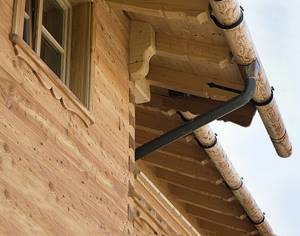
Popular shapes and colors of gutters in Russia
Today in Russia, round-shaped gutters are the most popular. It should be noted here: in addition to the fact that the shape of pipes and gutters allows the consumer to combine systems of drainage elements, it also has a significant impact on the cost of the entire drainage system. For example, a round gutter shape is cheaper than a rectangular one, since it has a simpler production technology and requires significantly less material consumption. As for the popular colors of gutter systems purchased today by Russian buyers, the palm is, of course, held by white gutters, which successfully emphasize the roof of rich red, green, blue, and brown colors. It must be said that white gutters go perfectly with both the brick facade and window frames and trim, which, as a rule, are also made in white. Gutters of all shades of brown are no less popular - they are chosen, as a rule, for houses with a dark roof and a light facade.
Caring for drainage systems

Modern drainage systems do not require special maintenance, but they still require timely inspection - this is what will help avoid many problems in the future and maintain the excellent appearance of the drainpipes. For example, over time, dust will accumulate on the gutters - in order to maintain the good appearance of the facade, it is a good idea to periodically wash off this dust with a soft cloth, water and soap. In addition, every autumn the drainage system must be cleaned of leaves, pine needles, branches, and sand that accumulate in it. If this is not done, debris accumulated in the gutters will prevent the free passage of water, which will eventually begin to overflow the edges of the gutters, leading to damp walls or stagnation, creating the risk of deformation of the gutters. In addition, during the winter, accumulated and frozen dirt can simply rupture the drainpipe. To prevent such troubles, it is necessary to install special meshes in the funnels of the drainpipe, and also periodically, if necessary, clean the gutters and pipes using water pressure and a special shovel. The material was prepared based on data from the TOP HOUSE - Best for a Country House retail chain. Any use of this material is possible only with an active link to the source: https://www.tophouse.ru/articles/2007/11/21/vodostochnaya-sistema-vazhnyiy-nyuans-sovremennoy-krovli/ Marketing and Advertising Department, November 2007 .
Plastic drainage system
Thanks to various details, you can create a high-quality drain of any configuration that is suitable for any type of roof and roofing covering.
Advantages of plastic:
- Good operating temperature range.
- Light weight.
- Resistant to corrosion and ultraviolet rays.
- Robust design, installation of which takes little time and effort.
- Large color assortment.
- Does not require special care.
Disadvantages of using plastic drainage systems:
- Deformation due to temperature changes.
- It is necessary to change the seals, assemble and disassemble the structure.
- Cannot be repaired, only discarded.
- Poor mechanical stability, may crack and break.
